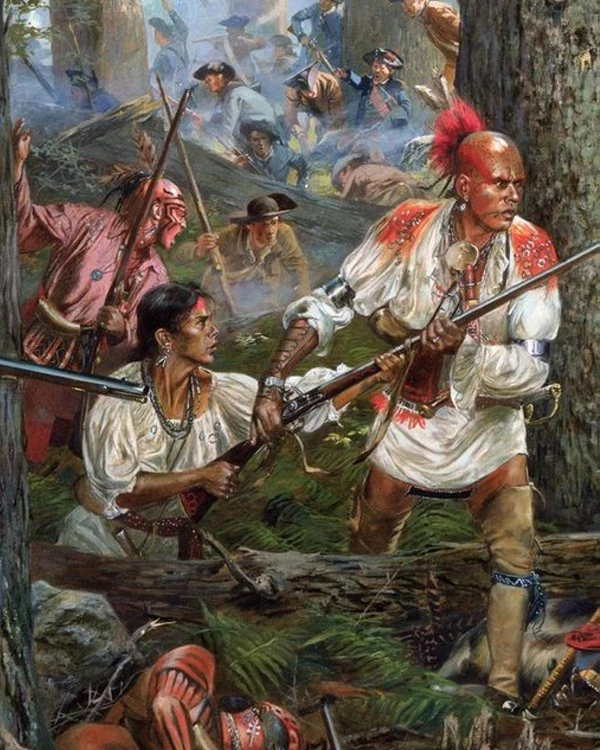Last updated: January 29, 2025
Person
Tyonajanegan — “Two Kettles Together"

Oneida Indian Nation/Don Troiani
Nothing is known about the early life of the Oneida Indian woman Tyonajanegan, who was known to the Europeans as “Two Kettles Together." Sometime in the 1750’s she married Han Yerry Tewahangarahken, or "He Who Takes Up the Snow Shoe," a chief warrior of the Wolf Clan Oneidas. The couple resided at the Oneida village of Oriska (modern Oriskany area). Over the years, she gave birth to three sons and a daughter. It would be the American Revolution that would change her life forever and make her a heroine of the Oneida Indian Nation.
Early in the conflict, Han Yerry and Two Kettles had determined to side with the Americans, as did the majority of the Oneida Nation. The Siege of Fort Schuyler (Stanwix) in 1777 would finally force the Six Nations to openly choose sides, which resulted in a split within the centuries old confederacy. As with many women during the revolution, Two Kettles was determined to take an active role. There was a small group of Oneida men and women at Fort Schuyler when the British began arriving on August 2nd, and Two Kettles is believed to be one of several Oneidas who made their way through the encircling British troops to warn the settlements in the Mohawk Valley that the British had arrived.
General Herkimer’s militia encamped near Oriska on the evening of August 5th. Two Kettles prepared two pistols and made ready to join her husband and other Oneidas accompanying Herkimer on his march to Ft. Schuyler in the morning. During the resulting Battle of Oriskany on August 6th, Two Kettles fought alongside her husband, firing her pistols until Han Yerry was wounded through the wrist. She then took up the task of reloading his weapon for him each time he fired. Two Kettles had gained a reputation as an excellent rider, and after the battle ended, she was eventually able to procure a horse and ride into the valley to report the outcome of the battle, and prepare people for the flood of wounded men that would be returning. In the fall of 1777, when Han Yerry and a group of Oneidas joined the American army fighting at Saratoga, Two Kettles again accompanied her husband, both to tend to his still healing wound, and to act as a messenger. To show his appreciation for her service, General Horatio Gates instructed Colonel Gansevoort at Ft. Schuyler to “deliver to her Three Gallons of Rum, for a Winter’s supply for her Family.”
Two Kettles’ last documented service occurred on August 14, 1781 at the fortified homestead of Fort Timmerman (near modern St. Johnsville). The “fort” acted as a base for a small force of militia and Oneida warriors protecting the gristmills on the nearby creek. While the men were away pursuing one group of raiders another force of 150 Loyalists and British allied Indians attacked the homestead. Two Kettles and the small group of Oneida and White women with her defended the home and drove the attackers off.
After this, Two Kettles largely disappears from written history. The last mention of her is that she lost her eyesight late in life and that she is believed to have died around 1824, surviving her husband by around three decades. Two Kettles Together is another one of the many unsung women of the American Revolution who were willing to sacrifice everything for a cause they believed in.
